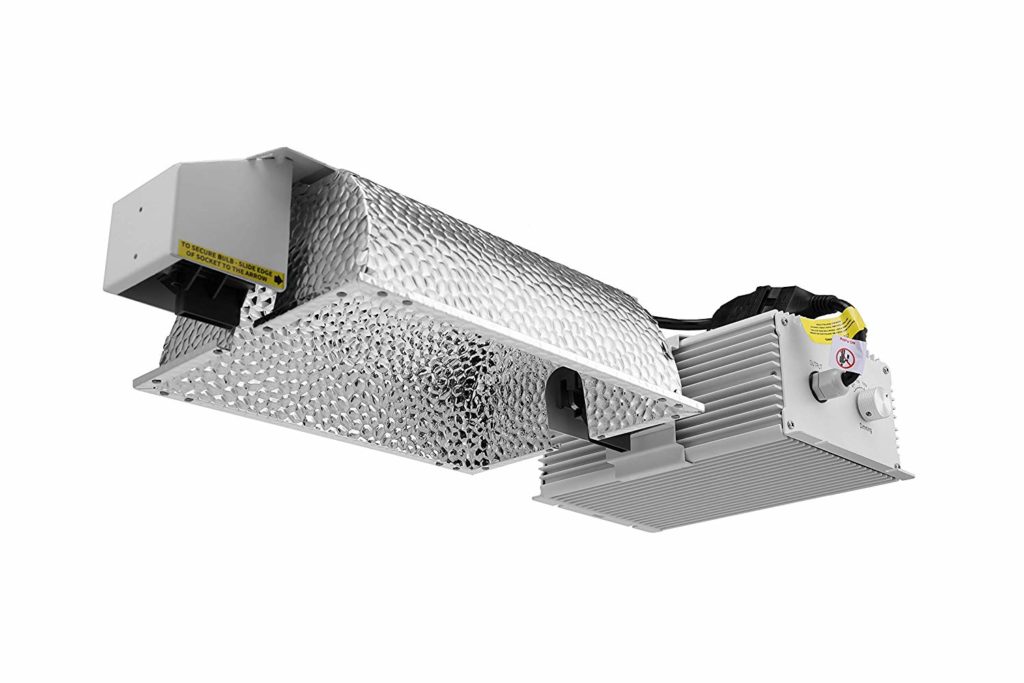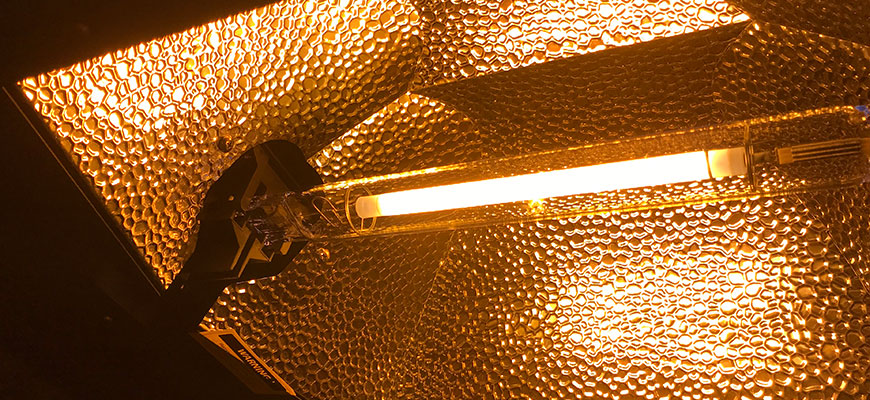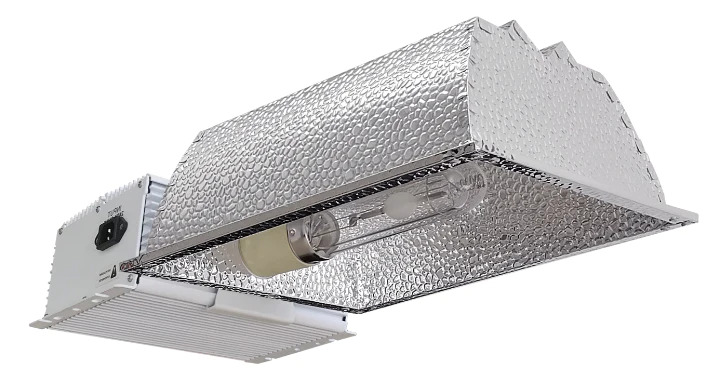The Difference Between Single Ended and Double Ended Grow Lights
When it comes to horticultural lighting, single ended and double ended grow lights are two common types of light sources used in both commercial and home growing scenarios. Both types of lights emit light that is necessary for plant growth, but there are some key differences between them.
What Are Single-Ended and Double-Ended Grow Lights?
Grow lights are an essential component for indoor horticulture. They mimic natural sunlight and provide plants with artificial light, allowing them to grow optimally in indoor environments. Single-ended and double-ended grow lights are the two most common types of grow lights in the industry. Single-ended grow lights are the traditional, commonly used grow lights. Double-ended grow lights are a modern variation of single-ended grow lights, providing higher intensity and better light quality. Understanding the difference between these two types of grow lights is crucial in selecting the ideal light source for your indoor plants.
Pros and Cons of Single-Ended Grow Lights
Single-ended grow lights have become a popular choice for indoor garden setups due to their affordability and convenience. However, like any other grow light option, there are pros and cons to using single-ended grow lights.
- Pros:
- Affordable: Single-ended lights are relatively inexpensive compared to double-ended grow lights. This makes them an excellent choice for beginner gardeners on a budget or those who need to light a smaller area.
- Compatibility with fluorescent fixtures: Single-ended grow lights can be used with fluorescent fixtures, which makes them a good option for those who want to upgrade their current setup without investing in new fixtures.
- Easy to replace: Single-ended bulbs are simple to replace when they burn out, minimizing downtime for your plants.
- Can still provide adequate light output: When used correctly, single-ended grow lights can deliver adequate light output for plant growth and yield.
- Cons:
- Lower light quality: The light quality from single-ended grow lights may not be as good as other grow lights such as double-ended grow lights. This can impact the overall growth and health of your plants.
- Shorter lifespan: The lifespan of single-ended grow lights is typically shorter than other types of grow lights. This means you will need to replace them more frequently to maintain optimal light output.
- Limited intensity discharge: Single-ended lighting can have a limited intensity discharge, which means they may not be the best option for certain plant types that require more intense light.
- Limited coverage: Single-ended grow lights typically provide a smaller coverage area compared to other types of grow lights. This means you may need more of them to adequately light a larger area.
Pros and Cons of Double-Ended Grow Lights
In recent years, double-ended grow lights have gained popularity among indoor growers due to their high light output and powerful intensity. In this article, we will compare and contrast the advantages and drawbacks of using double-ended grow lights.
Advantages of Double-Ended Grow Lights
- Light Output:
Double-ended grow lights are designed to produce a higher light output than their single-ended counterparts. They can produce up to 10-15% more light per lamp, which translates to a larger coverage area and better plant growth. The extra light output means that growers can use fewer lights to cover the same area, reducing energy consumption and costs.
- Plant Growth:
Double-ended grow lights produce a more powerful and intense light that stimulates plant growth. The light output is optimized for bringing out the best color of plants which is beneficial in the different stages of plant growth. The intense light also helps in the development of flowering and fruiting crops, ensuring a high yield. As a result, double-ended grow lights are an excellent choice for commercial applications where high yields are essential.
Drawbacks of Double-Ended Grow Lights
- Energy Consumption:
Double-ended grow lights tend to consume more energy than single-ended grow lights. This is due to their higher light output, which requires more electricity to maintain. As a result, growers may need to factor in higher energy costs when using double-ended grow lights.
- Heat Production:
Double-ended grow lights produce a significant amount of heat, which can adversely affect plant growth and also trigger temperature regulation of the indoor garden. To combat this, growers can use air-cooled hoods to dissipate the heat. If not addressed, the heat produced by double-ended grow lights may cause damage to plants or even the light fixtures themselves.
- Higher Costs:
Double-ended bulbs are relatively expensive compared to single-ended bulbs, and this can add up to significant costs, especially for growers who need to cover large areas. Additionally, double-ended grow lights will require a larger investment than single-ended grow lights.
- Limited lifespan:
Double-ended hps bulbs have a shorter lifespan and may need to be replaced more frequently than single-ended bulbs. This increases the cost of maintenance, especially for commercial growers.
Light Intensity
Light intensity is an essential factor to consider for any horticultural lighting system. The plant's growth, yield, and overall health are all influenced by the light intensity. The intensity of the light illuminating the plants is a function of the distance between the light source and the plants. Light intensity is measured in micromoles per meter squared per second (μmol/m²/s), and the amount of light required varies depending on the stage of growth of the plants.
Input Power of Single-Ended vs. Double-Ended Lights
When it comes to indoor horticultural lighting, input power is a crucial factor to consider, especially when comparing single-ended and double-ended grow lights. Input power refers to the amount of electricity or energy that a particular lighting fixture requires to operate.
Single-ended grow lights usually require a lower initial cost compared to their double-ended counterparts. However, they tend to use more electricity to provide sufficient light for plant growth. Single-ended bulbs usually come in a wide range of wattage options, ranging from 150 watts to 1000 watts. The voltage required for single-ended grow lights is typically 120V or 240V.
On the other hand, double-ended grow lights have higher initial costs, but they offer more efficiency in terms of power usage. They use less electricity to provide the same amount of light compared to single-ended bulbs. Double-ended bulbs come mainly in 600 watts or 1000 watts options. The power supply required for double-ended bulbs is usually 240V.
Original Intensity Versus Intense Light Sources
When it comes to single-ended and double-ended grow lights, it's essential to understand the difference between original intensity and intense light sources. Original intensity refers to the measure of light output from a bulb when it is first turned on. This means that a bulb's original intensity is usually the maximum amount of light it can produce.
On the other hand, intense light sources refer to high-intensity discharge (HID) bulbs that produce a greater output of light than their original intensity once they have reached their optimal operating temperature. This means that these bulbs become more efficient and powerful once they reach their ideal temperature, making them a popular choice for horticultural lighting.
Single-ended LED tubes, on the other hand, offer a simple LED tube light that produces a raw light output and can provide an excellent choice for horticultural lighting. However, they typically do not provide the same level of intense light as HID bulbs.
Temperature Control
Temperature control is a crucial aspect of indoor gardening, and it becomes even more important when it comes to growing plants. Any grower knows how pivotal the right temperature is for healthy plant growth, and light plays a significant role in maintaining that temperature.
Cool Temperatures Required for Plant Growth
When it comes to plant growth, cool temperatures are key. For many plant species, there is a specific temperature range that is optimal for growth and development. In general, cooler temperatures can help to prevent heat stress and allow for better uptake of CO2, leading to healthier and more vigorous plants.
For indoor growers using grow lights, it is especially important to monitor the temperature in the grow room to ensure that it stays within the optimal range for the plants being grown. If temperatures get too high, plants may experience heat stress, which can lead to stunted growth, reduced yield, and other problems.
When it comes to choosing between single-ended and double-ended grow lights, the issue of heat and temperature is particularly important. Single-ended grow lights tend to emit more heat than double-ended grow lights, which can sometimes lead to a higher risk of heat stress for plants. This is because single-ended lights have just one point of contact for the input power, which can create hot spots in the bulb and increase overall heat output.
Which Type of Grow Light is Best For My Grow Room?
When it comes to selecting the best grow lights for your grow room, it's essential to consider the needs of your plants, the size of your grow room, and the level of light intensity required for optimal growth.
The first step in choosing the right grow light is understanding the size of your grow room, as this will determine the number of lights you need to cover the area. Single-ended grow lights are a popular choice for small to medium-sized grow rooms. They are typically in the form of fluorescent fixtures, LED lights, or high-intensity discharge (HID) bulbs. Single-ended bulbs offer a range of light output options, making them versatile for various plant types and growth stages.
On the other hand, double-ended grow lights are an excellent choice for larger grow rooms that require intense light coverage. Double-ended bulbs are more potent than single-ended bulbs and provide higher light intensity levels. Moreover, they come equipped with air-cooled hoods that supply cool temperatures for the plants, enhancing the quality of the light's usable output. Double-ended grow lights also feature arc tubes that increase light quality and industry-standard reflector options that allow for customizable light distribution.
When it comes to plant types, both single and double-ended grow lights can offer optimal growth results. High-pressure sodium (HPS) lights are a popular choice for flowering plants since they emit strong red light wavelengths that help promote blooming. LED lights, on the other hand, are suitable for all plant types as they offer a wide spectrum of blue and red light wavelengths, which are essential for plant growth.











